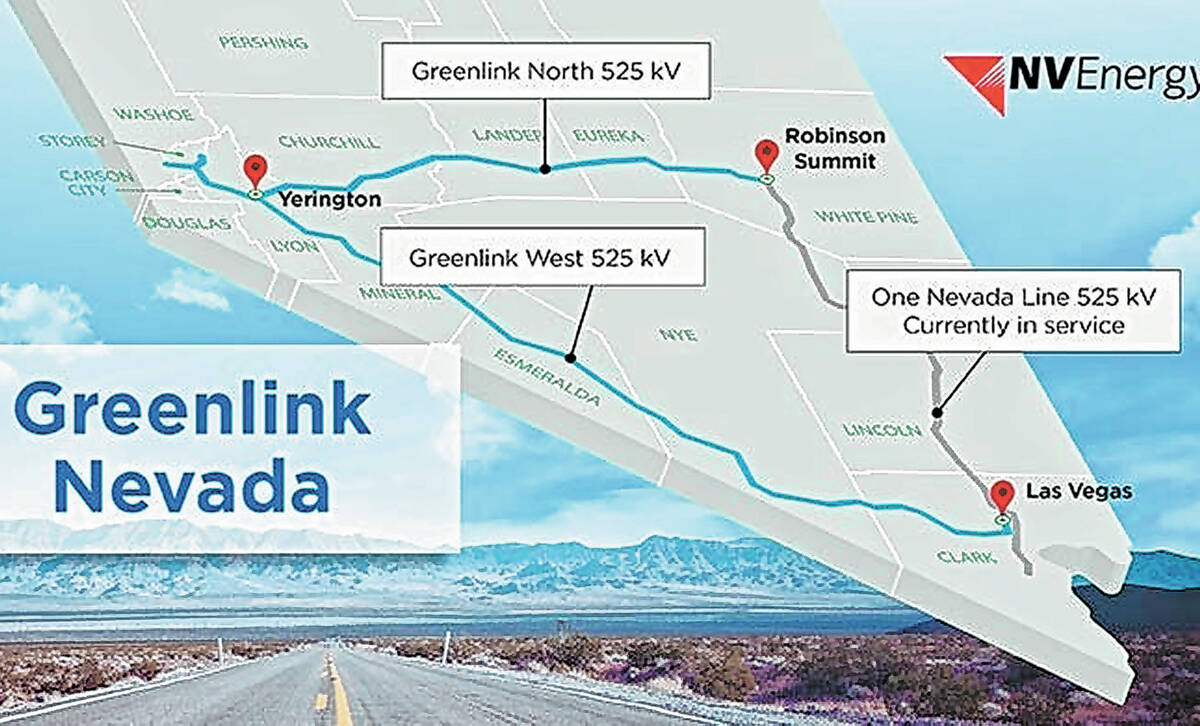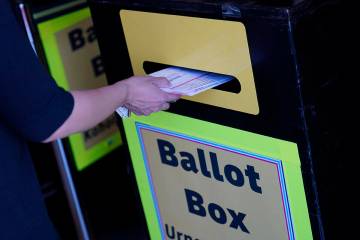VICTOR JOECKS: Greenlink will cost you a lot of green
Renewable energy would be a lot less popular if the public understood how much it drives up prices.
NV Energy is building hundreds of miles of new transmission lines to connect different regions of the state. Called Greenlink, the project was originally supposed to cost $2.5 billion. NV Energy officials now say it will be $443 million over budget and regulatory delays will likely drive the price even higher. It has become so expensive that NV Energy wants to stretch repayment over 70 years or more.
That’s especially worrisome after power bills soared to record highs. The average bill last July was $376 for a single-family home. NV Energy says bills should come down later this year. But they won’t stay low for long once customers have to start paying off multibillion-dollar projects.
Over the last dozen years, Nevadans have been repeatedly told that shifting to renewable energy would lower costs. In 2019, then-Gov. Steve Sisolak signed a bill mandating a 50 percent renewable portfolio standard by 2030.
“A strong RPS lowers costs,” claimed a fact sheet from the Sierra Club, Western Resource Advocates and the Natural Resources Defense Council. They said a study found a 50 percent RPS “could save ratepayers more than $192 million over the next 20 years.”
Voters received a similar message when they voted in 2018 and 2020 to enshrine a 50 percent RPS into the state constitution. “A ‘YES’ vote” on the question “would save Nevadans money,” the pro side promised in the Nevada voter guide.
In 2013, then-Gov. Brian Sandoval signed a bill to move Nevada away from coal power plants. Shawn Elicegui, NV Energy’s associate general counsel at the time, testified on the bill. He said, “We project the rate impact will be less than 4 percent.” Pressed further, he said the marginal increase in a $100 power bill in 20 years would be $4.
Just last year, NV Energy sought more than $1.8 billion to shut down and replace the power from the state’s last coal plant.
That brings us to Greenlink. In a 2021 report, NV Energy listed three reasons for the project. They were all requirements imposed by government, starting with the RPS. Greenlink is needed to counteract Nevada’s increasing dependence on unreliable sources of power, such as solar energy.
Conclusion: If it weren’t for state mandates, Greenlink wouldn’t exist. And neither would its nearly $3 billion price tag your grandkids or great-grandkids will be paying off.
Don’t feel bad for NV Energy. Unlike most businesses that lose money from government regulations, it stands to make a fortune from this new construction. It currently receives a 9.5 percent return on equity.
There are lots of factors in energy prices, including federal regulations and volatile natural gas prices. But that shouldn’t prevent Nevadans from noticing a pattern. In 2012, Nevada residential customers paid an average of 11.83 cents per kilowatt-hour. In 2023, the price was 15.5 cents per kWh. Not exactly the savings we were promised.
The greenest thing about Greenlink and green energy more broadly is how much money it costs you.
Victor Joecks’ column appears in the Opinion section each Sunday, Wednesday and Friday. Contact him at vjoecks@reviewjournal.com or 702-383-4698. Follow @victorjoecks on X.





























